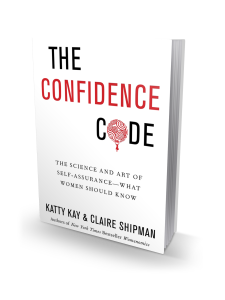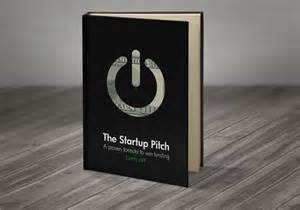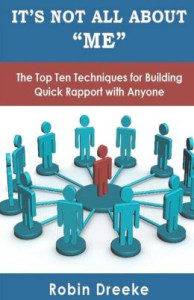 The Confidence Code: The Science and Art of Self-Assurance—What Women Should Know
The Confidence Code: The Science and Art of Self-Assurance—What Women Should Know, by Katty Kay and Claire Shipman, carries an important message – one that is directed toward women but can also resonate with many men. Unfortunately, the message is often oversold and supported by questionable research.
The book’s key message is that women in general have and exhibit less confidence than men in general, and this holds them back in so many fields because confidence is strongly correlated to achievement and influence. It’s so pervasive that even some the most successful women in the world, such as Christine Lagarde, head of the IMF, and Monique Curry of the WNBA, suffer from it. As Curry puts it, while even the lowliest benchwarmer on the men’s team has as an ego as big as the starters, even the women stars can easily get their confidence shaken.
This general lack of confidence is enormously costly, because women in general ask for less in salary negotiations and tend to make failure a self-fulfilling prophecy by not even applying for positions or entering contests unless they are highly certain to succeed.
The book makes a persuasive case that both nature and nurture contribute to womens’ lower confidence levels, and in its sixth chapter details several recommendations for a “cure”. The key recommendation they give, is “When in doubt, act.” Most importantly, women are urged to fail fast, to take action despite their hesitation, and if they fail, learn from it and move on. They are taught to reframe negative thoughts with positive alternative explanations, and to focus on acting and speaking up not for themselves, but on behalf of others.
One technique readers are explicitly told not to us is “fake it “til you make it”, because supposedly that quickly becomes obvious to others. That’s rather ironic, because the authors seem to have ignored that advice in some of their statements. Here’s one example. They relate experiments with 15,000 sets of twins in Britain that found that student’s self-perceived ability rating was an even more important predictor of achievement than IQ, and draw the conclusion this conclusion: “Put simply, confidence trumps IQ in predicting success.”
In reading books of this type, I’ve developed the habit of taking sweeping statements like that with a grain of salt, so I turned to their footnotes to read the original citation. The paper had nothing to do with the assertions made in the book (and I read through it twice because of my own lack of confidence).
That said, should you read this book? If you are a woman who finds it distasteful that less-qualified men are getting promotions because they speak up more in meetings and tend towards overconfidence in their conclusions, this book will help you by letting you see it’s OK to be more like them, and that you are not alone. In fact, if you’re a man who feels the same way, you can also profit from this book, because the prescriptions will probably work for anyone. If you’re a man who doesn’t lack confidence, but you have a daughter, you definitely should read it, and buy her a copy also.
On the other hand, I am quite confident that you could also get almost as much out of reading this article in The Atlantic, which summarizes the book quite nicely
 While I specialize in sales and executive level presentations I’ve always had a spectator’s fascination with startup pitches, because of their high stakes, no-nonsense audiences and emphasis on brevity. That’s the reason I read The Startup Pitch: A Proven Formula to Win Funding
While I specialize in sales and executive level presentations I’ve always had a spectator’s fascination with startup pitches, because of their high stakes, no-nonsense audiences and emphasis on brevity. That’s the reason I read The Startup Pitch: A Proven Formula to Win Funding, but the reason I’m strongly recommending it is that the author is an expert who has can talk the talk very clearly but has also walked it. It also doesn’t hurt that the principles he advocates—such as understanding your audience, the value of structure and clarity, the relative unimportance of the slide deck, etc.—align with the ones I constantly preach.
Lipp’s formula is simple. He says investors are just looking for two simple things: low risk and high return. Your pitch needs to prove you can deliver those two simple things, and that means covering four essential points, in order and without fail:
Problem: What is the problem you’re facing or the trend you’re exploiting?
Solution: What’s your unique solution and what are its benefits?
Market: What’s the potential market and how will you capture it?
Business: How will you profitably get, keep and grow customers?
While the four point formula covers the reasoning behind your pitch, you need to add what Lipp calls four major elements of influence: credibility, audience value, data and story. These elements are similar to what you will find in many presentation books, including my own, but the book is chock full of real life examples from actual pitches, both successes and failures. These examples make the book an interesting read but more importantly make it credible. In fact, Lipp consistently demonstrates his own principles by effectively using his own elements of influence throughout the book.
Especially interesting is the chapter on delivery, which shows that the word “pitch” is actually a misnomer, because the best ones are actually dialogues. Investors want to know if you are someone they will be able to work with, so they will pepper you with questions and then assess your openness, willingness to listen, and poise under pressure. You have to be open to questions without losing your flow, and that takes preparation and tons of practice—an hour per minute of pitch.
After having absorbed Lipp’s formula, I can imagine his pitch to sell the book idea to a publisher: Entrepreneurs go through many difficult challenges, but few obstacles are as daunting as the pitch to raise money from investors. The typical venture capitalist may hear 750 pitches a year and invest in only three. The solution, after much hard experience, analysis of successful pitches and talking to top VCs, is the formula outlined in this book. There are tens of thousands of potential buyers entering the market every year; that’s if you only count entrepreneurs, because others can also benefit. People will buy the book for its promise and recommend it to others because it will work for them.
You don’t need to be a starry-eyed entrepreneur to benefit from this book. If you make high stakes presentations to tough audiences, I strongly recommend it.
 One of the key themes of this blog is outside-in thinking, so it’s no surprise that a book entitled, It’s Not All About Me: The Top Ten Techniques for Building Quick Rapport with Anyone
One of the key themes of this blog is outside-in thinking, so it’s no surprise that a book entitled, It’s Not All About Me: The Top Ten Techniques for Building Quick Rapport with Anyone, caught my attention.
As an FBI agent, Robin Dreeke used these techniques to gain quick rapport in order to get people to open up to him, sometimes revealing far more than they expected to. I doubt many of my readers are trying to cultivate undercover informants, but it’s a useful skill to have in sales and just about any persuasive communication.
Many of the techniques will be familiar to the average reader of this blog, and many are common sense, albeit of the kind which we need to constantly reinforce and practice to turn them into productive habits. Examples are #5, suspending your ego so you don’t always have to win or be right, and #6, validating others to make them feel important, particularly by improving your listening attitude and skills.
But there are also many useful tips which were new to me (and I’ve read a lot on the topic, ranging from beginning with Dale Carnegie, through Daniel Goleman and most recently to Neffinger and Kohut), especially since the book is filled with anecdotes illustrating the use of each technique in real life. One example is technique #1, establishing artificial time constraints. When you approach a stranger to strike up a conversation, they generally feel uncomfortable because they don’t know how much of their time you’re going to take up. You can sometimes get people to put down their guard if you show or tell them up front that you’re only going to take up a quick bit of time.
It’s possible that some of these things could be seen as “manipulative”, but that depends on your intent. If you genuinely take an interest in the other person and have their best interests in mind, using the techniques will leave them feeling better for having talked to you, and that is a win for all concerned.
To put this book into the larger context of the sales world, the publication of The Challenger Sale ignited a debate about the relative effectiveness of challenger selling vs. relationship selling. While I personally give a slight edge to challenger selling, I don’t see any reason at all that they should be mutually exclusive. Relationships may not be all-important in B2B sales[1], but they certainly are important, and you don’t have to be disliked to deliver challenging insights about the customer’s business. Besides, if they like you, they are more likely to listen in the first place.
[1] As the old saying goes in sales: “If you want a friend, get a dog.” I have two, so what does that say about me?
 Why would a business-oriented blog write a recommendation for a political biography? Short answer: there are excellent leadership and persuasion lessons in here.
Why would a business-oriented blog write a recommendation for a political biography? Short answer: there are excellent leadership and persuasion lessons in here.
It’s a truism among businesspeople that if only government was run as efficiently as business,
we would not have the deficits we have or be in the mess we’re in. We read all the business books about great business leaders, and love to look down on government. (By the way, the finger I’m pointing is also directed at myself.) We like to think that the lessons all run in one direction.
But how many business titans could successfully run the world’s largest and most complex organization, leading high ego individuals with ironclad job security (most of whom carry guns), while surviving a complete turnover in the board of directors midway through their tenure? By the way, your job “interview” is with senators who have an ax to grind and can be seen on national TV. Oh, one more thing: mistakes have consequences in lives, not share price.
That’s what Bob Gates had to do running the Department of Defense, from late 2006 to 2011.
While his memoir, Duty: Memoirs of a Secretary at War, has garnered a lot of attention recently—at least in the Beltway—for some of the things it says about Obama and Biden, that’s all surface stuff, in my opinion. The entire book could be assigned reading in a management or leadership course for all the examples and case studies it provides in crucial management questions. Here are just a few examples to give a flavor for the issues covered in the book:
How do you manage a cause that you believe in, when top leadership does not? When Obama was running first for the nomination and then the presidency, he took a hawkish stance on the “good war” in Afghanistan and then was trapped by his own campaign rhetoric. While he courageously supported a surge beginning in 2009, he never got behind the strategy or supported his generals. Gates had to carefully tread the narrow path between the micromanagement from the White House and the operational and logistical needs of the combatants.
How do you handle the disconnect between strategy and execution? There’s a military saying that amateurs discuss strategy but professionals study logistics. It’s similar in business, where there’s an abundance of big-picture experts willing to throw good ideas out to the folks who have to figure out how to make them happen. When a crisis erupts, everyone has good ideas, such as imposing an immediate no-fly zone over Libya when rebellion breaks out. But finding the ships and planes, coordinating allies, getting funding, figuring out how to stop low-flying helicopters, and hundreds of critical but unseen details have to be managed just to make something so simple actually work.
How do you inject urgency into a vast organization? By the time Gates took over, the DoD had already been at war for longer than the US involvement in WWII, but there was curiously no sense of urgency. One amazing line from the book is that “The Department of Defense is structured to plan and prepare for war but not to win one.” While troops were fighting and dying, life in Washington seemed more intent on protecting turf and high dollar programs.
There’s a lot in here about persuasive communications also, especially about being a strategic persuader. Those of you who are challenged with getting resources for your projects from the CFO should imagine the difficulty of going to Congress to request funding! Gates learned that while you may feel good about saying what’s on your mind, it’s far more effective to be smart about it. He took Congressman Tom Lantos’ advice that, “It is the tone that makes the music,” and I especially like his own suggestion to “Never miss a good chance to shut up.”
While everyone loves to bash politicians and bureaucrats, and to lecture them on “how business does it”, it might be profitable to pay attention to what they can teach us once in a while, and Duty is a great start in that direction.


